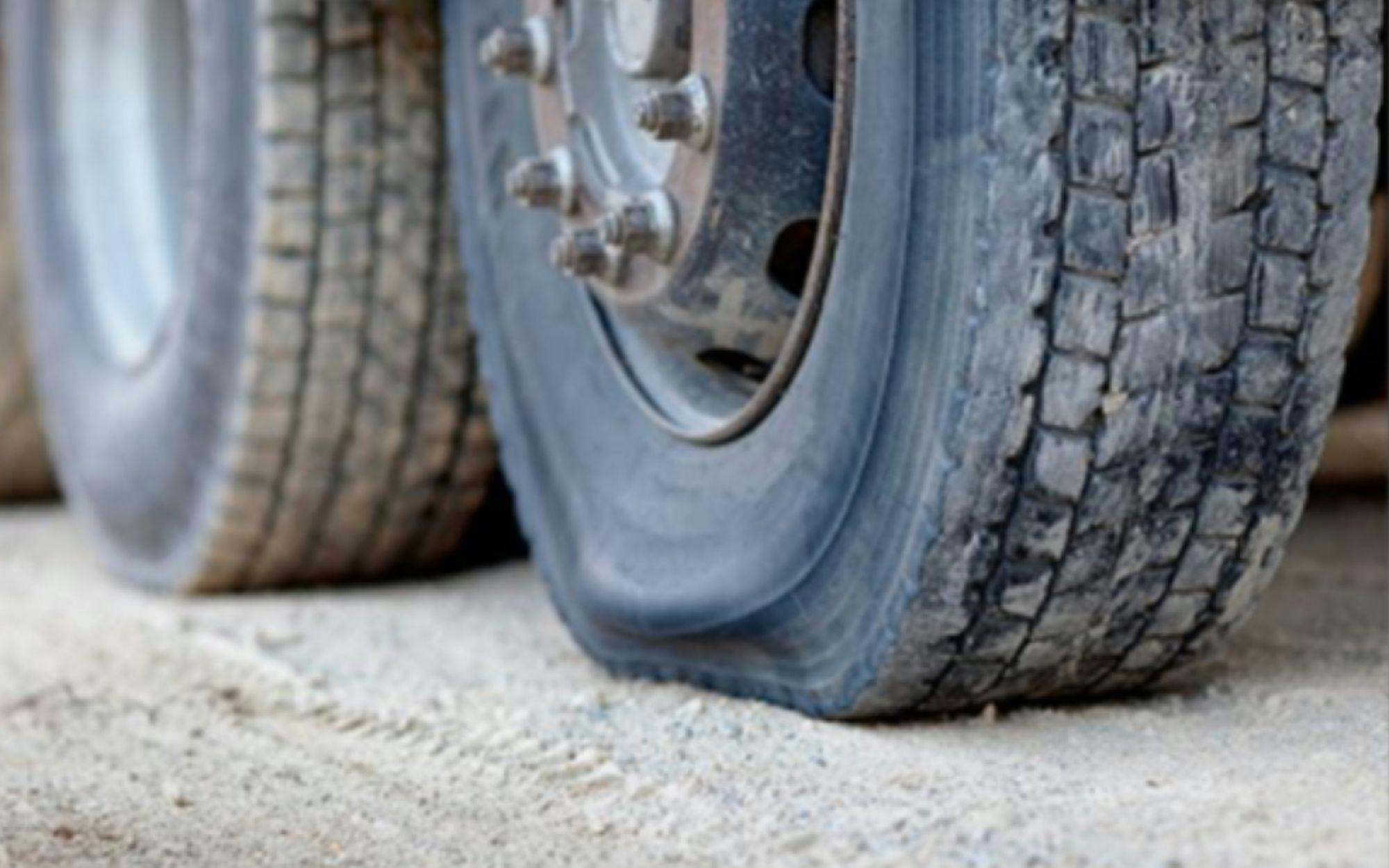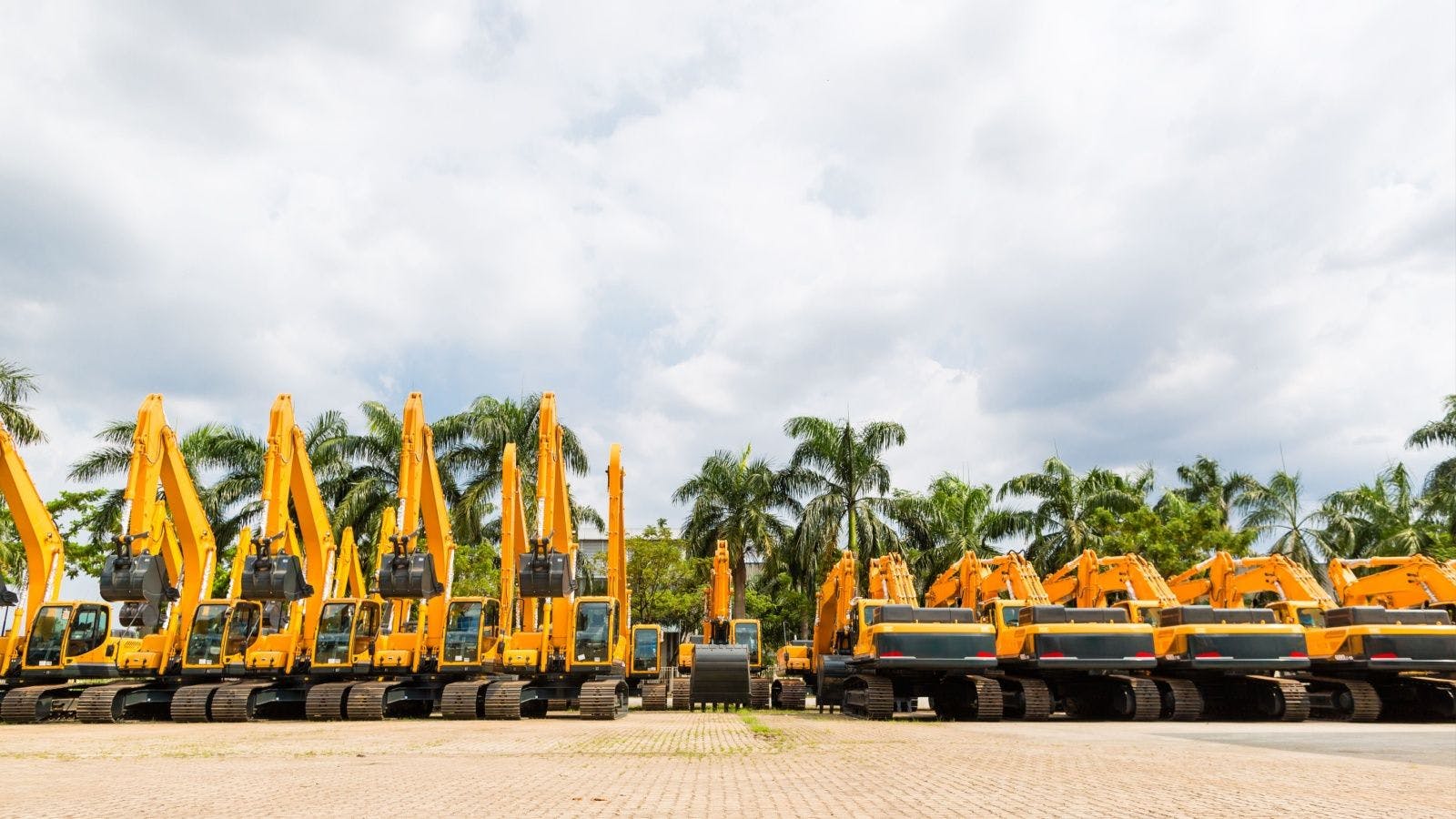
Too Many Flat Tires? There's an App for That.
Construction sites can be a dangerous place for ready-mix vehicles, concrete pumping trucks, trucks delivering supplies and materials like concrete blocks, lumber and more, especially in the summertime, when elevated temperatures can wreak havoc on tires. Run-flats are dangerous any time, but more so on a construction site that is bustling with activity. Incidents can be deadly, especially with a truck full of wet cement or loaded with concrete blocks. Toss in unpaved surfaces and lots of debris, and the scenario can get scary in a hurry.
The debris that is common on construction sites can lead to slow tire leaks, which are certainly a nuisance to be dealt with. But rapid deflation events are cause for alarm for the vehicle in question and workers in close proximity, especially when the vehicle is fully loaded with wet cement, concrete blocks, precast concrete sections or other heavy loads. Notification of a rapid deflation allows the driver to seek out a safe spot so the tire can be serviced safely.
In addition to the ever-important safety aspect of proper tire inflation, there is the cost side of the equation to consider, both in actual dollars and in efficiency. A pre-trip inspection that includes checking tires pressures is always a good idea, but manually gauging tires can take up to 20 minutes and often provides inaccurate readings. Those readings are important because maintaining proper tire inflation pressures can lower tire related costs by $750 or more per asset. Under-inflated tires decrease fuel economy, cause tires to wear faster and reduce the number of times a casing can be retreaded.
Tires are responsible for over half of all roadside breakdowns, a factor that bears on both the out-of-pocket cost to attend to the issue, but also downtime and its impact on efficiency. An average road service call takes over two hours. Since ASTM C-94 specification for ready-mix concrete states that the discharge of the concrete shall be completed within one-and-a-half hours after the introduction of the mixing water to the cement and aggregates, or the introduction of the cement to the aggregates, an average road service call will likely trash the load of ready-mix.
Thankfully, there is a solution. Automated tire-monitoring systems eliminate dangerous and costly run-flats for ready-mix fleets by providing real-time alerts for low inflation pressure, rapid deflation events and extreme tire temperatures. Should a tire issue develop, perhaps debris on the jobsite has caused a slow leak, the audible alerts and visual warnings help drivers quickly identify which tire location is affected and gauge the digital pressure reading. Taking immediate action improves vehicle safety and lowers tire-related costs. This increased visibility on tire inflation helps drivers avoid run-flats, which can be especially dangerous on construction sites; it also helps avoid costly and time-consuming roadside tire replacements. A full range of tire monitoring options—from individual systems to advanced fleet management solutions—are available, allowing ready-mix fleets, cranes, dump trucks and other heavy on- and off-road equipment to select the solution best suited to the user’s respective needs.
How they work
External, valve stem-mounted sensors pass tire pressure and temperature data to the in-cab monitor/display, providing drivers with real-time information and alerts. With these systems in place, when the ignition is keyed on, the system provides accurate and reliable inflation pressures for all wheel positions. No manual gauging is required, allowing drivers to be more productive and efficient. At any time, a driver can determine the pressure for a specific tire with the press of a button.
Should a tire pressure issue develop, visual and audible alerts allow the driver to quickly see which tire location has the problem, along with a digital pressure reading. In addition to low inflation pressure, some systems monitor and alert on rapid deflation events and high tire temperatures. The rapid deflation warning is triggered when the pressure drops 4.5psi within 16 seconds regardless of the baseline tire pressure. This allows the driver to take immediate action, pulling the vehicle over and finding a safe space for tire service. Immediate action can also avoid additional damage to the vehicle.
A high temperature alarm, which is activated at 175°F, provides warnings of excessive heat that may be caused by other potential wheel problems such as wheel bearings, stuck brakes, etc. The belts inside a tire can start to separate from the rubber at around 200°F, so alerting the driver beforehand allows the driver to pull over and let the tire cool off to avoid far more serious issues. High-temperature alerts also helps to protect the sensors.
Simple and Fast Installation for Immediate Results
The initial installation and programming of tire-monitoring systems should take approximately one hour. Mount and hardwire the 12-volt display/monitor in the cab. A remote antenna kit, which moves the reception point out of the cab and improves reliability of the RF signal reception, is recommended. Each sensor includes a unique number—use this to program each wheel position with baseline tire pressure. Install the wireless sensors simply by screwing them onto the valve stem.
Tire-monitoring systems are increasingly being integrated into onboard computing/mobile communications providers. Integrating with third-party providers allows the data and warnings to flow seamlessly. Back-end reporting tools and email/text can heighten awareness throughout the organization.
Monitoring and continually reporting tire pressures and temperatures allows fleets to schedule repairs and corrections to reduce tire related maintenance costs, extend tread life, protect casings and minimize catastrophic tire failures. Maintaining proper tire-inflation pressure maximizes the performance of the tire, leading to reduced downtime while improving safety and efficiency. Designed to handle the extreme environmental conditions found on roadways across the nation, tire monitoring systems account for heat, vibration and the longevity needed for performance on the open road as well as congested construction sites.
ROI
While each situation is unique, tire monitoring systems provide returns on investment in several areas, including increased fuel efficiency, longer service life of tires and an increase in the number of times a casing can be retreaded. In addition, the cost avoidance of not having drivers spend 20 minutes gauging tires contributes to efficiency and ROI, as does the avoidance of scrap. Recall that the ASTM spec calls for ready mix to be used within one-and-a-half hours and the average road service call taking over two hours. Saving just one tire and one load of cement can often save enough to pay for an entire tire-monitoring system.
Related stories








